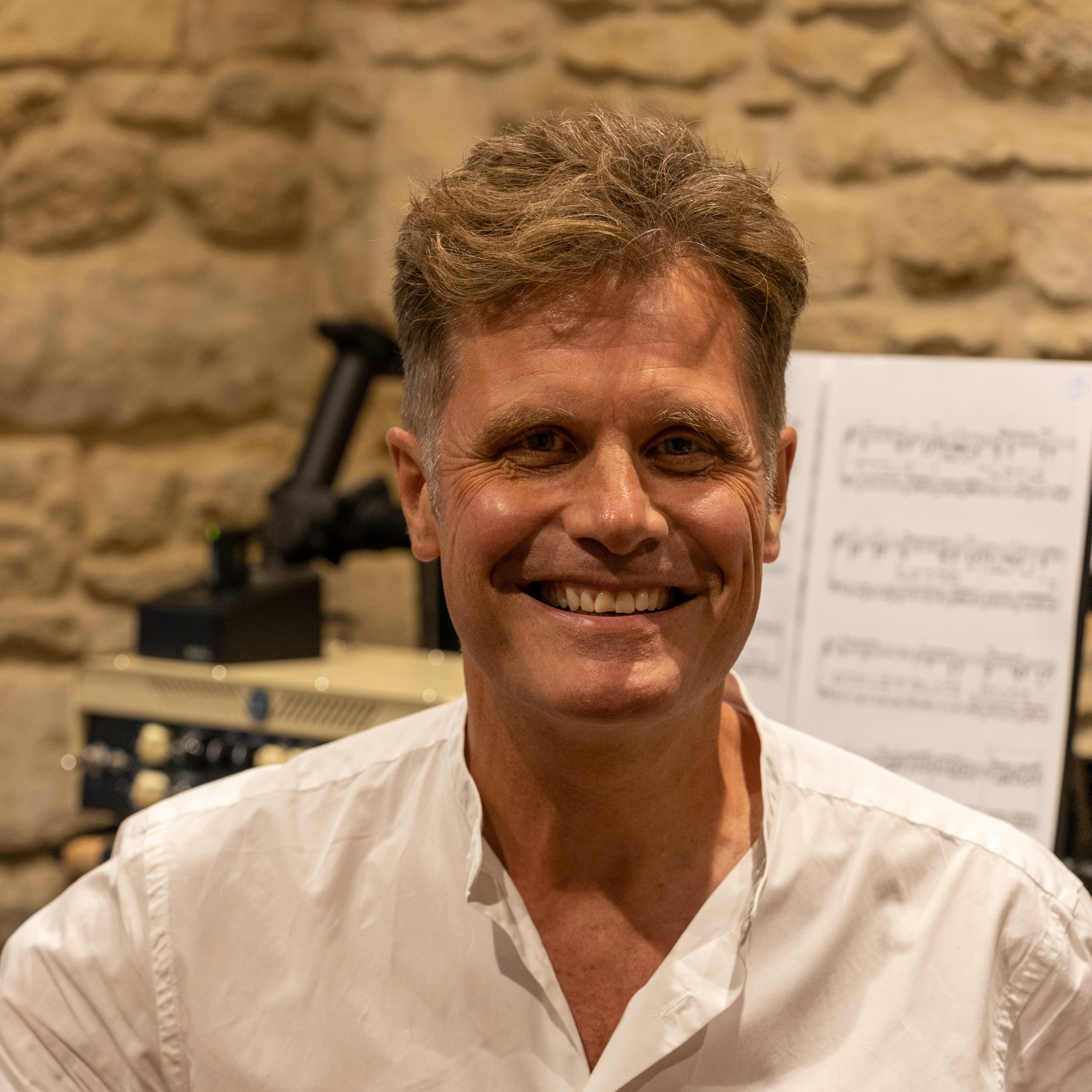Best acoustic guitar mics: our pick of microphones for recording your acoustic guitar
Capture your acoustic guitar's wonderful shimmering highs and warm, deep lows with 10 choice microphones from Shure, Beyerdynamic, and more…
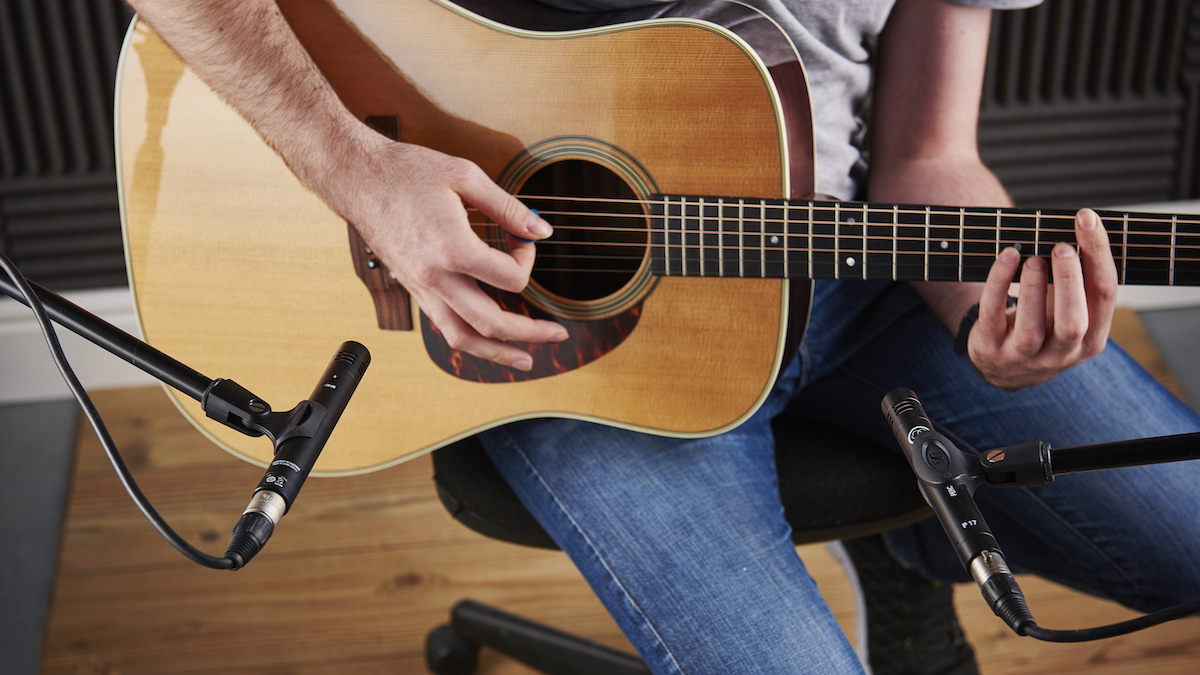
There's not much to an acoustic guitar, a few thin slices of wood, a few thicker bits, some fret wire, half a dozen tuners and six strings made of nylon or steel. But glue 'n screw them all together and boy can it sound heavenly in the right hands. It can sound pretty good in the wrong hands too – picture Elvis absolutely hammering his acoustic on his seminal recording of That's All Right Mama at Sun Records. Sounds perfectly imperfect to us, just as it should. Its rich timbre, complex texture and broad range can make it a tricky instrument to record though, which is why we're taking a deep dive into the best acoustic guitar mics.
Different styles of playing call for different types of microphones, so we're going to explain when to consider a condenser mic, or when a dynamic mic or ribbon mic may yield better results. Perhaps you’re a cash-strapped singer-songwriter, spending much of your time touring with little time or money to invest in recording? In that case you may want to use an on-board mic/pickup system that's primarily designed for live performance but can be DI'd with surprisingly good results. We've covered them all here.
Getting mic placement right is more than half the battle to getting a sublime recorded tone. Place the mic in the wrong place and your sound will be either weak and gutless, or muddy and indistinct. We'll be exploring the best places to aim your mic and looking at the rudiments of multi-mic setups. Just head to the buying advice at the end of this article.
Best acoustic guitar mics: Our top picks
If money is no object, then surprise, surprise, we'd have an Octo Set (yes, that's eight and it is a thing) of Neumann KM184s flown in on our private jet. If budget is a little tighter that's no reason to be despondent because there are some stunning acoustic guitar microphones available for a little less.
The Shure SM81 is an iconic mic for recording acoustic guitar that's proved itself over decades. This is a mic with an astonishingly flat frequency response curve that records like a dream with almost no colouration. It's built to last too.
Years ago, ribbon mics were ubiquitous but as recording technology changed, they began to fall out of favour. We're glad to see there's been a resurgence of interest in them in recent years because they sound absolutely tremendous. The Beyerdynamic M160 is a fantastic example that's caught our attention because it's a hypercardioid, rather than the usual figure-8. There's nothing wrong with figure-8 patterns, far from it, but the M160 is extremely easy to focus in on the action. More importantly, it sounds incredible.
Best acoustic guitar mics: Product guide
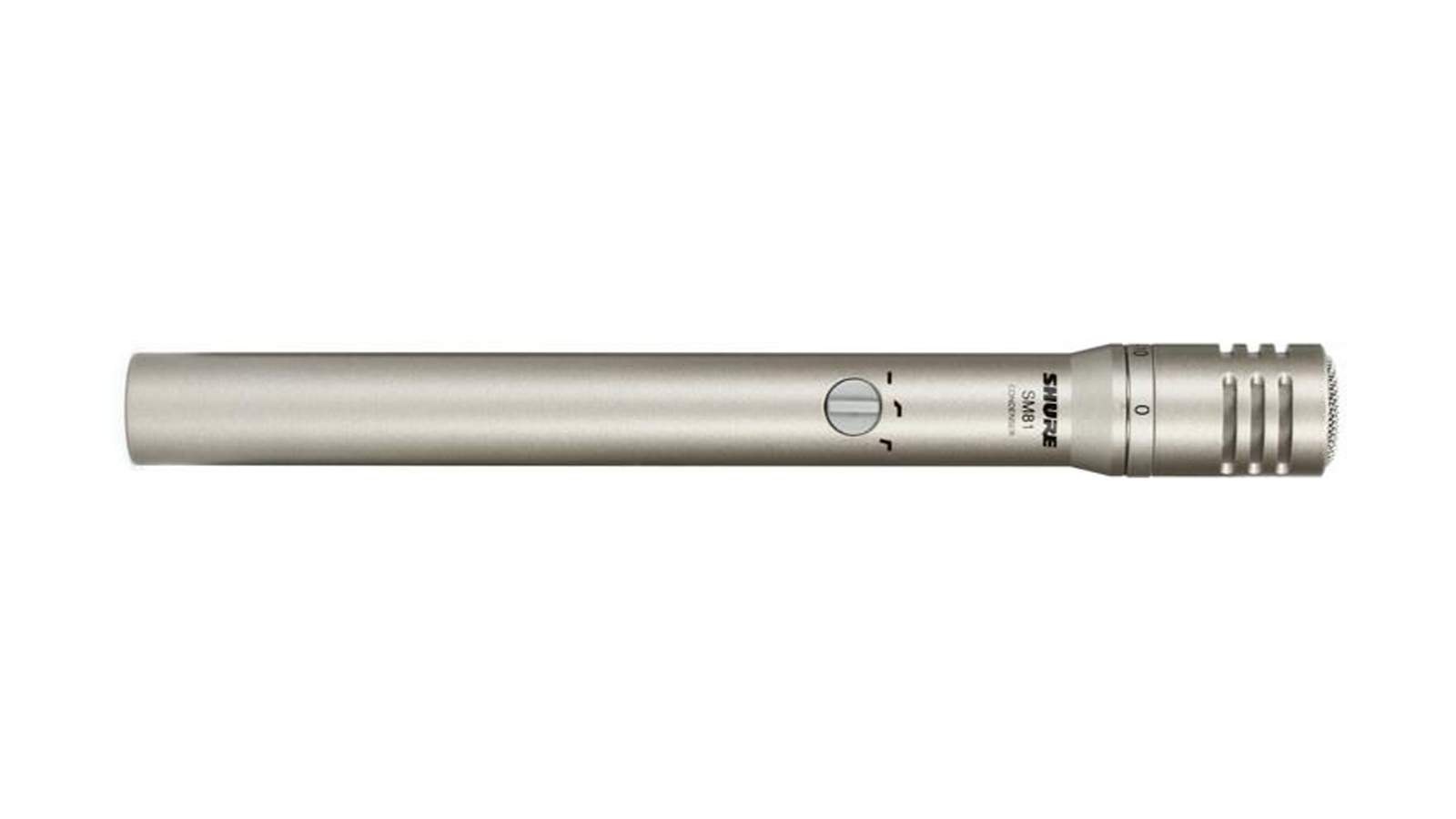
1. Shure SM81
Our expert review:
Specifications
Reasons to buy
Reasons to avoid
Most mics that are used for recording acoustic guitar have arrived via a circuitous route that usually involves a drum kit, or bits of it. It's hard to think of two instruments that are less alike but what works well for miking up a cymbal usually works well for an acoustic guitar too – after all, it's all about capturing transients, clarity and that high-end shimmer.
So, we acoustic guitarists end up using mics that are primarily marketed at drummers. The difference here is that Shure's SM81 is, first and foremost, aimed at acoustic guitarists, albeit with a friendly, open invitation for pianists, drummers and string players too.
Despite its slim, attractive body the SM81, in common with all of the SM family, is a rugged beast. It's built from tough vinyl-coated steel and Shure claim it's 'field-usable' over a wide range of temperature and humidity conditions. As an acoustic guitarist, that's unlikely to be your primary motivation for buying it, but nevertheless it's nice to know that your fingers will probably stop working before it does.
Of more interest is its frequency response curve that's incredibly flat. Self-noise is very low, output is high and it exhibits minimum colouration, even off axis. In short, it’s a dream to work with. Reproduction is faithful and its uniform, transparent character makes multi-mic setups a breeze.
If close proximity recordings start to become bogged down in too much bass there's a 6dB/18dB low-cut filter to help your acoustic regain its position in the mix. There's a 10dB pad too, but that's probably more useful for your drummer friends unless you're an aggressive strummer wielding a powerful dread.
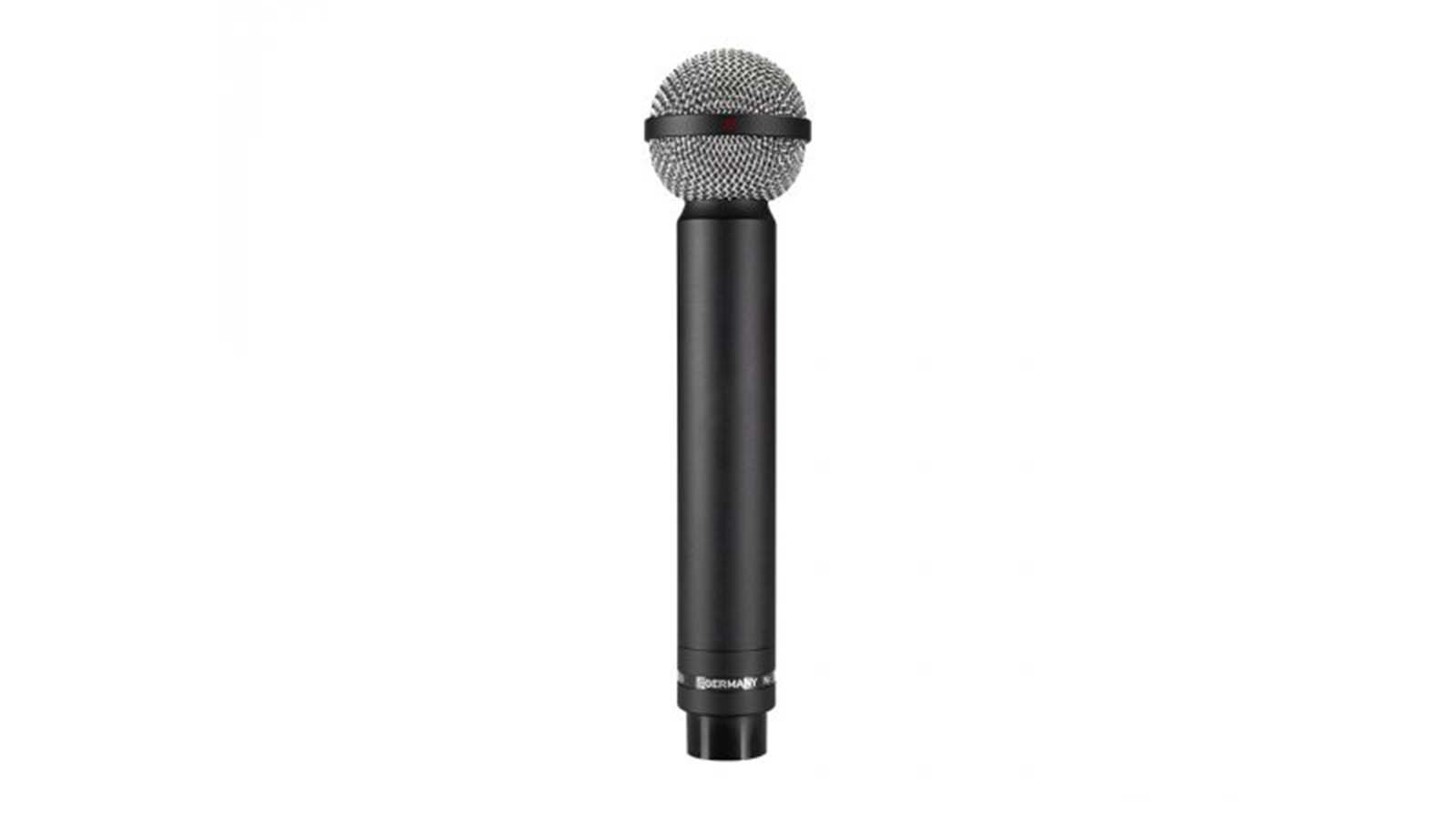
2. Beyerdynamic M160
Our expert review:
Specifications
Reasons to buy
Reasons to avoid
A defining feature of ribbon mics is that they have a figure-8 polar pattern, which picks up sound from two sides but rejects everything else. Back in the day, ribbon mics were very popular in radio studios because engineers could use just one mic to pick up two broadcasters, but they're equally adept at recording a singer-songwriter strumming their guitar or two vocalists singing a duet.
Sometimes though, when you're trying to record one instrument with precision, the dualistic nature of the ribbon mic can be a bit of a drawback. You try to record just the guitar but you end up picking up everything directly opposite it too. Fortunately, the M160 was born to tackle just this conundrum.
It features a very tight hypercardioid pattern that can target just what you want to hear and little else. Even better, it sounds wonderful too, with a lovely bass response, smooth mids and silky highs. Since its introduction in the mid-1950s it has earned a glorious reputation for making strident, raw sources sound buttery smooth. Countless classic recordings have featured the M160 miking up drum kits and distorted guitar cabs but trust us, it makes acoustic guitars and other stringed instruments sound other-worldly too.
Another characteristic of the M160 is its unusual double ribbon design, which boosts output and provides better signal-to-noise performance. Ideal for recording quiet passages finger-picked on an acoustic.
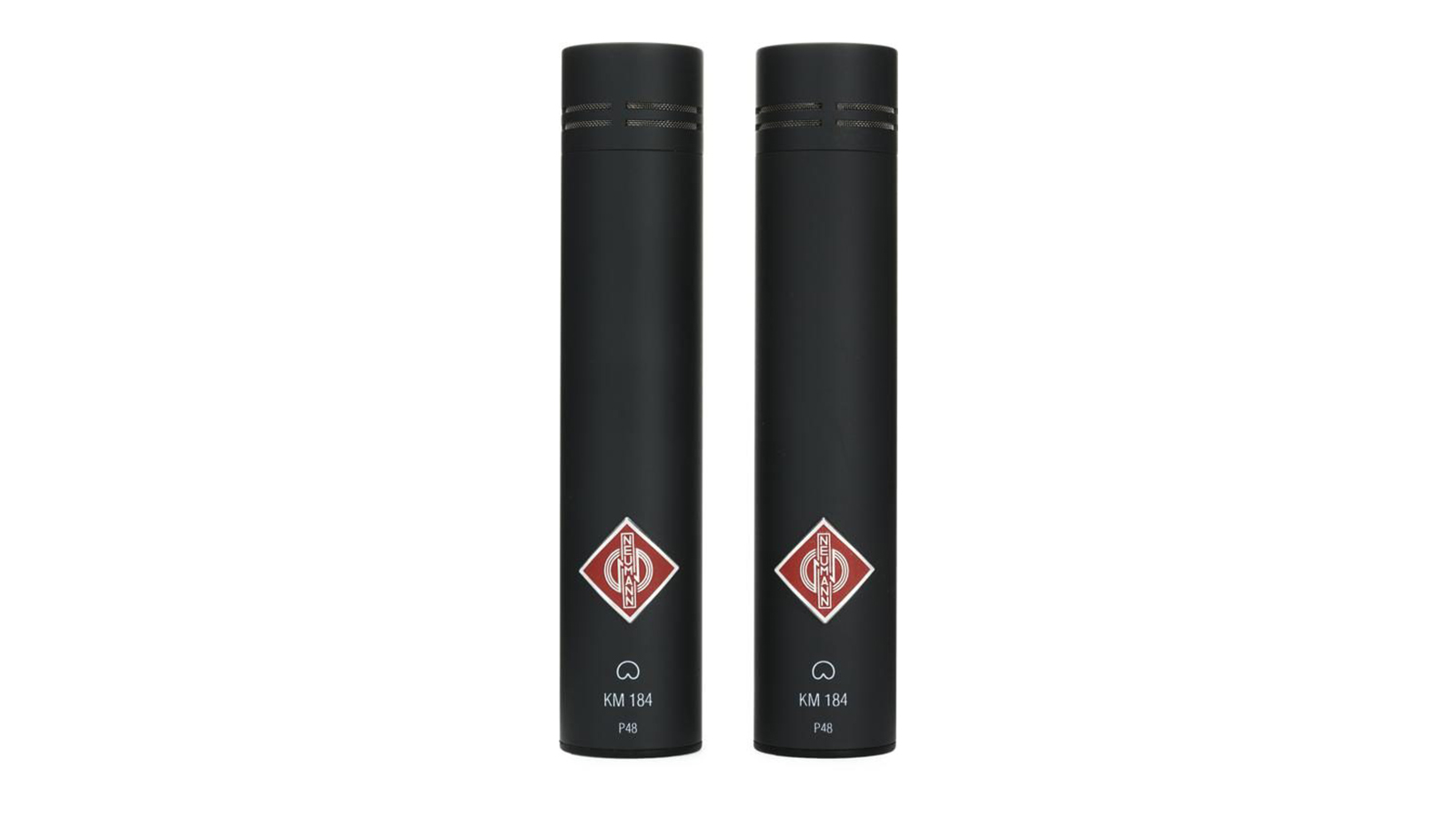
3. Neumann KM184 stereo set
Our expert review:
Specifications
Reasons to buy
Reasons to avoid
First off, if the price is a bit of a shocker don't worry, the KM184 is available as a single mic too. But if you're tired of recording in mono and want to try more adventurous setups then buying a stereo pair will save you money in the long run.
The cardioid KM184 is part of Neumann's 180 series that also includes an omni, the KM183, and a hypercardioid, the KM185. All are known for their very natural, transparent sound and almost imperceptible self-noise.
The KM184 displays almost no sound colouration over its entire cardioid pickup pattern and it's very successful at rejecting rearward sounds. These attributes are a godsend in multiple mic setups because, by the very nature of stereo recordings, no two mics are going to be aimed at the sound source in exactly the same way. The lack of colouration across the entire pickup pattern means that a pair of KM184s will sound consistent even if one is slightly off-axis.
This mic's almost flat frequency response curve does have a slight lift at the treble end but essentially it's going to capture a very faithful rendition of your playing. This honesty can be a little disconcerting to listen to at first but it's more desirable than trying to fix a poorly coloured sound with EQ.
With an ultra-low self-noise performance of just 13dB-A, these Neumann mics are ideal to record soft 'could hear a pin drop' playing styles, but they can also handle high sound pressure levels of up to 138dB, making them good for the loud stuff too.
Just be aware that these are sensitive mics that will pick up a lot of room noise and reflections if they’re there to be picked up. Take it from us, prep your studio or recording room properly to save yourself a lot of post-production grief…
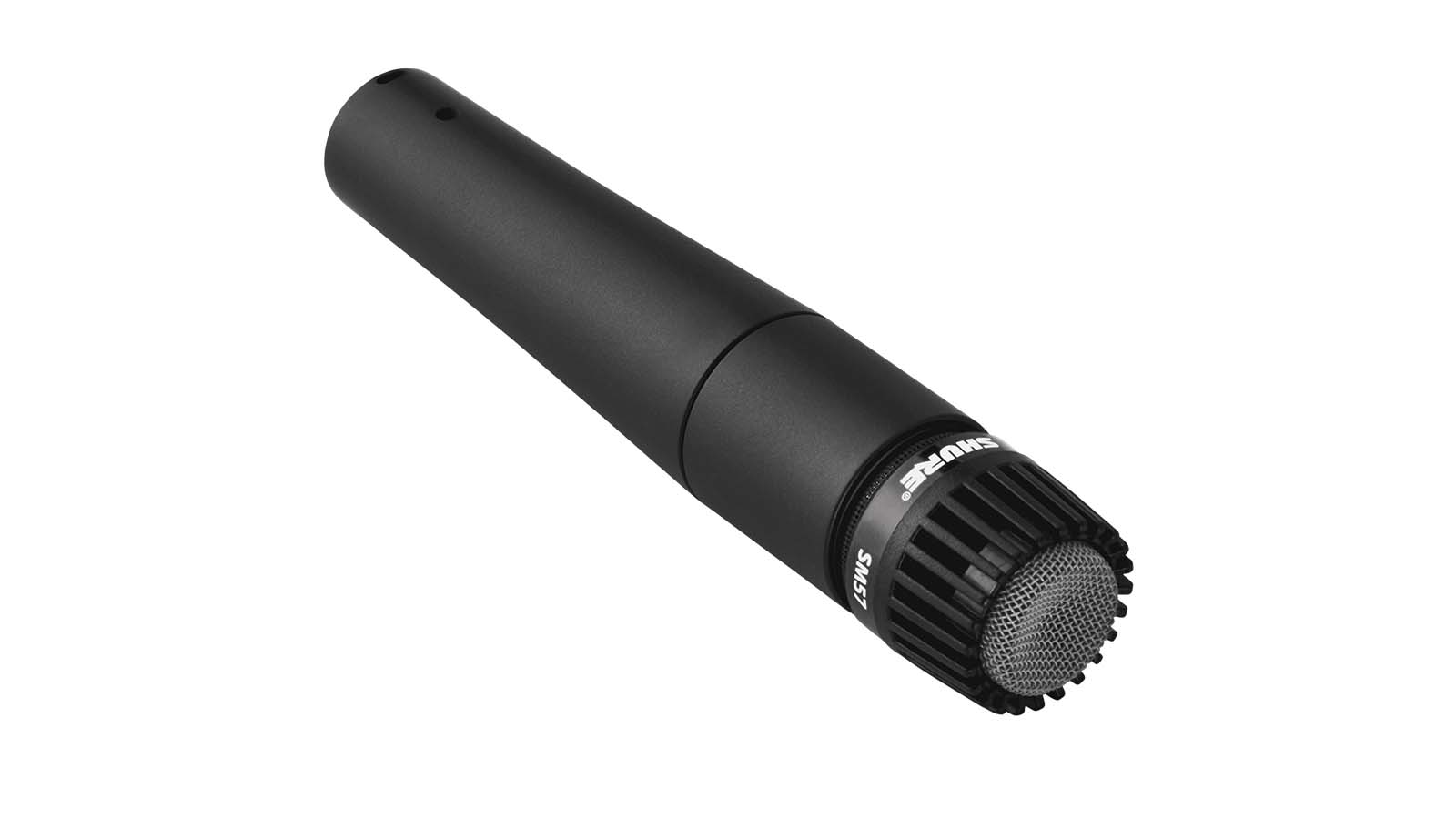
Specifications
Reasons to buy
Reasons to avoid
The SM57, along with its non-identical twin the SM58, is one of the best-selling mics of all time. Quite simply it's a legendary bit of kit. While the SM58, with its ball-style grille and built-in pop filter, was originally designed as a dynamic mic for live divas and crooners, the SM57 did away with these vocalist-friendly features to live out life as an instrument mic.
Other than these subtle differences, the two models are built identically but because the SM57's diaphragm is placed closer to the action, you're likely to encounter a slightly more pronounced proximity effect when using it. And, because of the way its grille is designed, the SM57 exhibits a slight presence lift too.
Truth is, the SM57 is not really suitable for delicate, nuanced playing styles or recordings that aim to capture every little detail. Instead, it's most at home sat in front of an aggressive strummer, picking up all of the good, rich percussive stuff while ignoring any unwanted high frequency noise or low frequency rumble. When you're done recording guitars put it to good use as an alternatively-voiced vocal mic or use it on stage, it's that versatile.
When you consider the mileage you'll get out of the SM57, it could be the best-value mic you ever buy.
Read our full Shure SM57 review
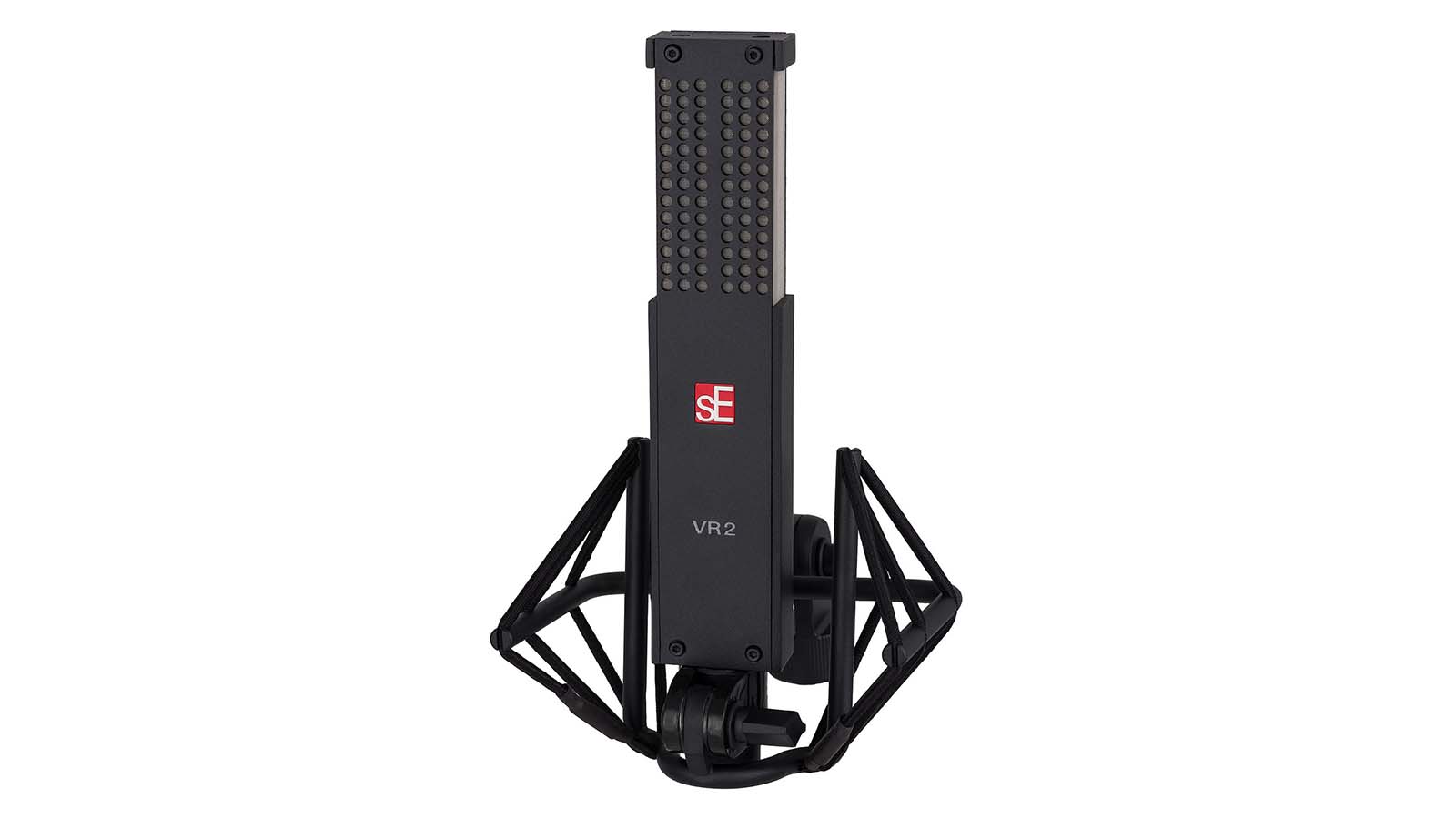
Specifications
Reasons to buy
Reasons to avoid
Nothing looks or sounds quite like the Voodoo VR2 (OK, other than it's passive sibling the VR1). Ribbon mics are known for capturing a very life-like, yet rich sound, which, let's face it, is what most producers want. However, many can't compete with condenser mics when it comes to recording higher frequencies – they just don't have the required top-end response.
Enter the Voodoo series from sE Electronics. It has been developed by CEO and classical musician Siwei Zou to have a wide frequency response from 20Hz right up to 20KHz. Not only that, but the response curve is not much of a curve at all, it's actually as flat as a pancake that's been run over by a steam roller. Twice. OK, there is a very, very slight presence boost between 2KHz and 10KHz, but essentially this mic will capture everything and capture it authentically.
Does this matter, when an acoustic guitar's frequency range sits well within these parameters? Well, that's up to you. Some people prefer a little less top end anyway because that's where the handling noise sits. Others would rather capture the full performance so they can sculpt it to their heart's content with EQ.
Another trick the VR2 has up its sleeve is active circuitry. Until relatively recently all ribbon mics were passive and required high-gain, high-impedance pre-amps in order to operate at their best. Active ribbon mics boast higher outputs and superior signal-to-noise ratios, doing away with the need for powerful preamps. This is important when recording quiet, delicate guitar passages because low-output passive ribbons can introduce unwanted noise.
The VR2 may seem a bit pricey, but compared to most studio quality ribbon mics it’s surprisingly good value.
Read our full sE Electronics Voodoo VR2 review
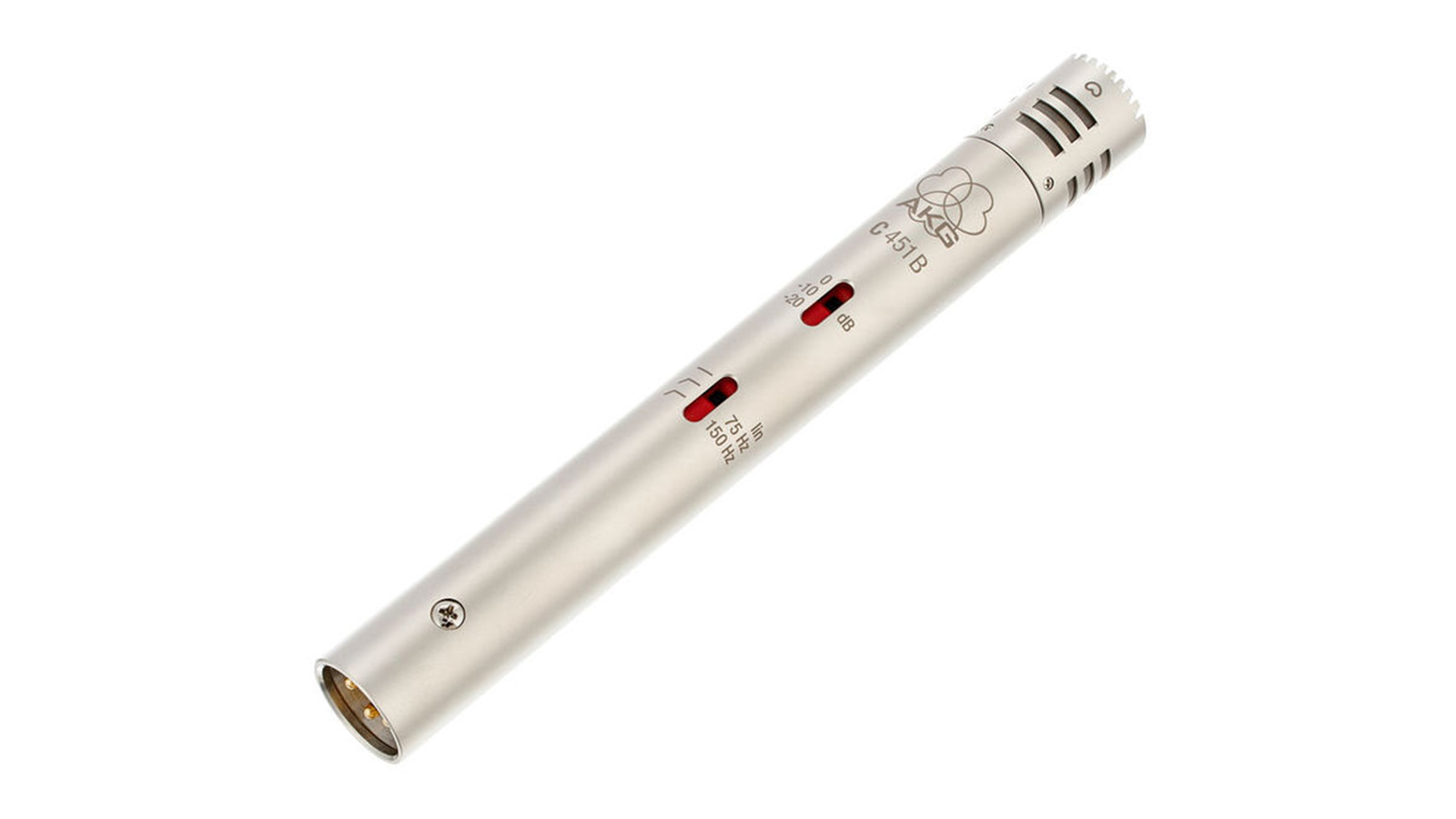
6. AKG C451 B
Our expert review:
Specifications
Reasons to buy
Reasons to avoid
The C451's excellent transient response, 20dB pad and modest size makes it a firm favourite with drummers miking up cymbals, hi-hats and even snares. It's incredible at capturing the snappy attack – the transients – at the beginning of a strike and for its ability to bring clarity to the highs without taking you on a trip to the land of brashness 'n fizz.
Early on, some bright spark had the idea of trying it on steel-strung acoustic guitar and discovered it worked its magic here too. It's particularly loved for bringing an exquisite shimmering quality to steel-strung guitar, while retaining plenty of smoothness.
If you're plagued by a dull, boxy sounding acoustic, chances are a C451 or two will bring enough clarity and brightness to lift it out of the mix. This is partly due to the C451's ultra-fine diaphragm and somewhat down to its pronounced presence bump after about 5KHz. In addition, the switchable low-cut filter that can roll-off the bass at 75Hz or 150Hz, will help to remove any muddiness induced by the proximity effect when close miking, letting that shimmer shine on through.
Despite its fine diaphragm, AKG rate this mic as 'roadworthy', which means when you've finished in the studio it's tough enough to take out on the road too.
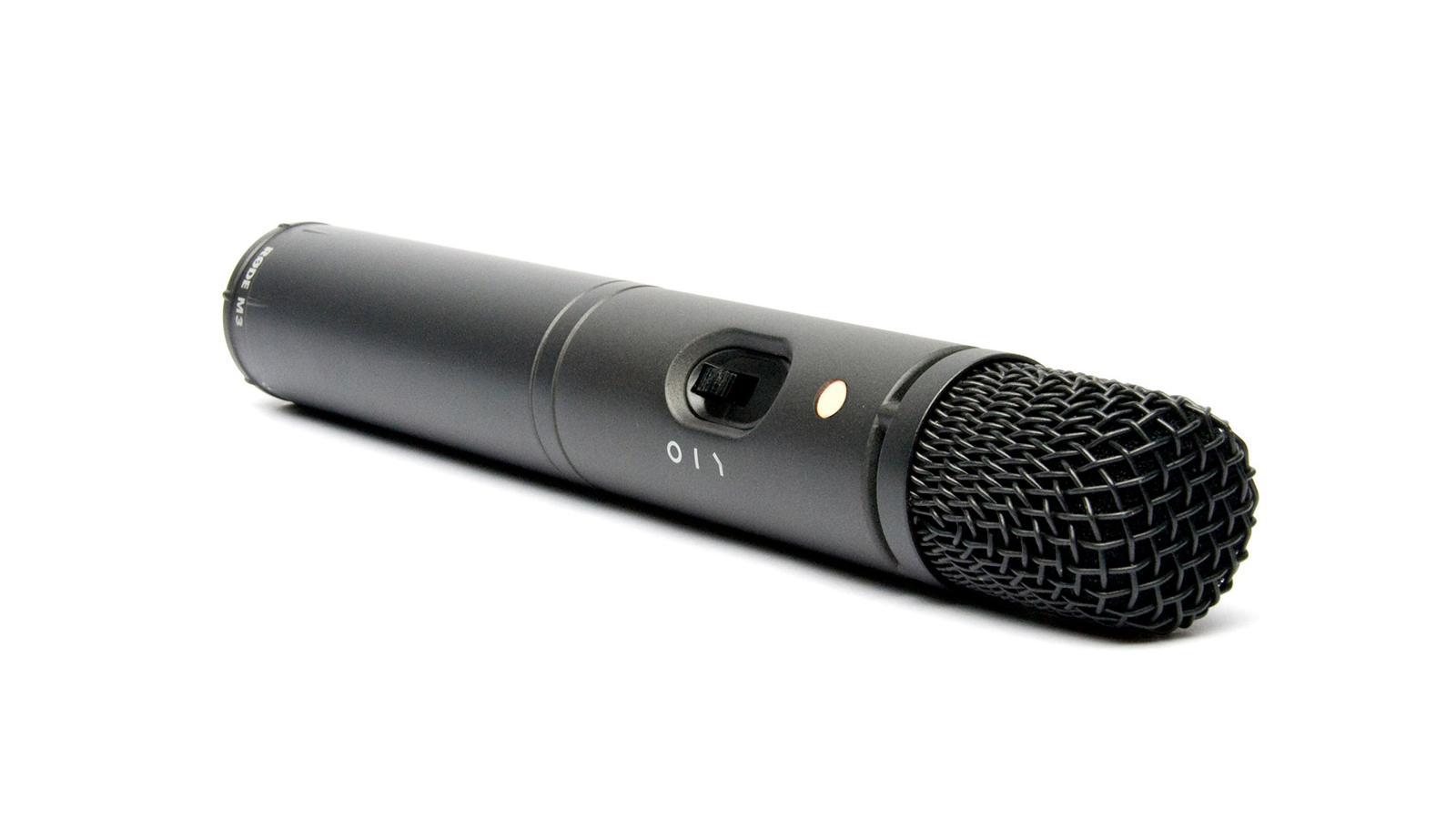
Specifications
Reasons to buy
Reasons to avoid
Trust Australian brand Røde to come up with a quality, end-address, condenser instrument microphone at such a keen price. This is no stripped-back, corner-cutting exercise either. The M3's substantial body is constructed from reassuringly weighty metal and its half inch condenser capsule is internally shock mounted to reduce noise. There's a selectable 10dB/20dB pad for loud sound sources, and an 80Hz low-cut filter to reduce any proximity effect bass frequencies cloying up the clarity of your recordings.
But enough of all the features, how does it sound? Surprisingly good actually. Its frequency response of 40Hz to 20KHz is more than wide enough to capture acoustic guitar and its response curve is pretty flat with just a few subtle peaks at the top end and a gentle bass roll off at about 200Hz. Recordings are smooth, bright and transparent with lots of high-end clarity.
It's astonishing that Røde is able to market a quality condenser mic like the M3 at a price point more suited to a good dynamic mic. The only drawback is that the M3 doesn't share the self-noise figures of something like a Neumann KM184, but then it doesn't share the high price tag either…
Read our full Røde M3 review
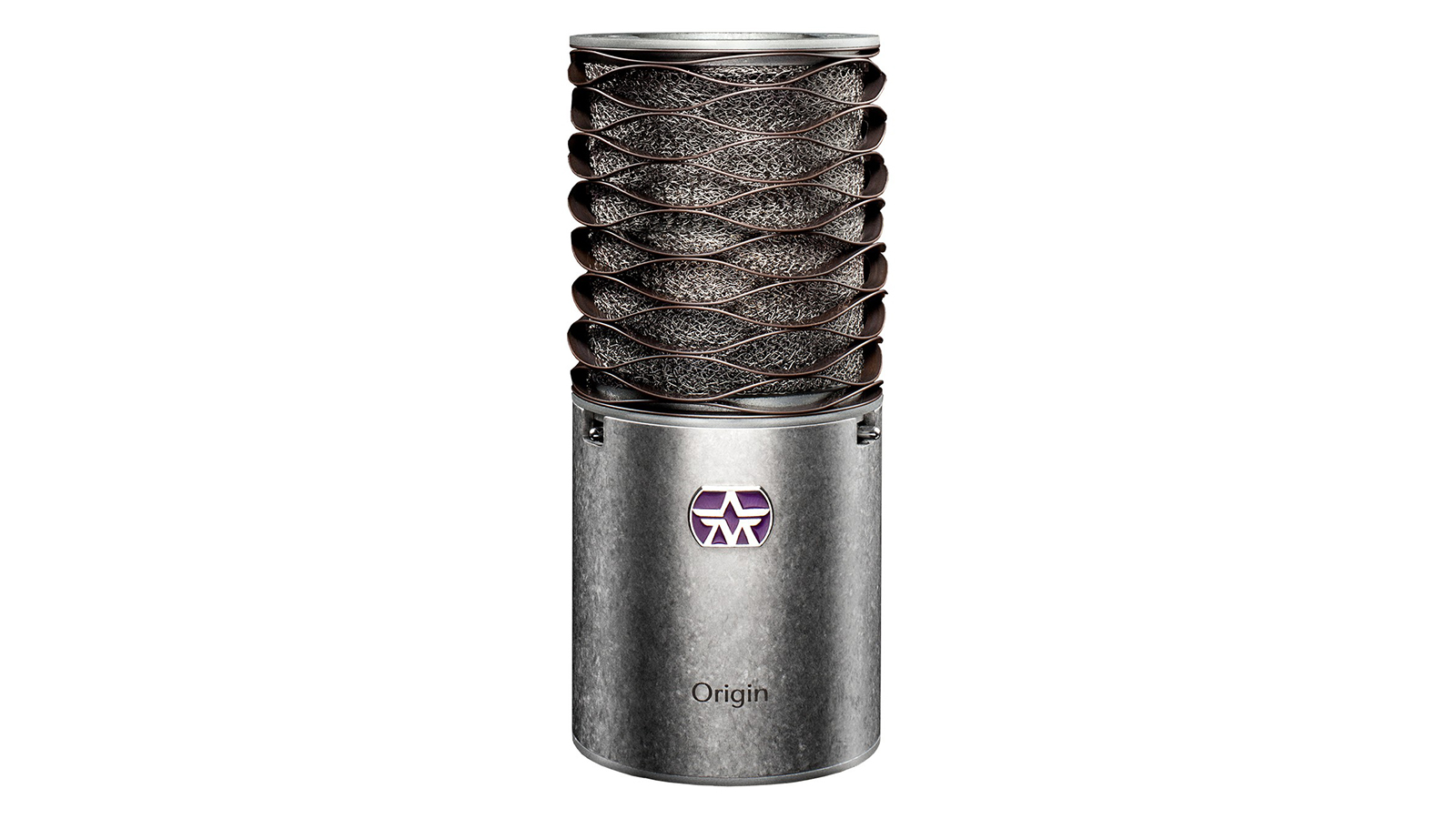
Specifications
Reasons to buy
Reasons to avoid
This is where it all started for British success story Aston. The aptly named Origin was their first mic and it went on to become a global best seller. It's also the microphone Aston markets as an all-rounder – wonderful for vocals but equally comfortable sitting in front of a guitar cab, drums or an acoustic guitar.
It's a large diaphragm condenser so we recommend pairing it with a small diaphragm end-address condenser (or even a Shure SM57) that can be easily and precisely aimed at the 12th fret. The Origin can then sit back a few feet, pointing in the general direction of the bridge, left to capture some delicious airiness and warmth.
Not too much warmth, mind. This is a transistor-based (FET) condenser mic, so it paints a more genuine sonic portrait than its tube-based relatives, which have a tendency to warm up everything they 'hear'. Perfect for vocals, but not necessarily desirable for acoustic guitar.
The Origin has a beautifully flat response curve with a gently sloping but pronounced presence lift from about 2KHz. These characteristics give that aforementioned transparency, plus plenty of clarity, all packaged up with an enviable smoothness that many pricier mics struggle to deliver.
Which brings us neatly on to the cost. It's pretty good value for a solidly built, large diaphragm condenser isn't it?
Read our full Aston Microphones Origin review
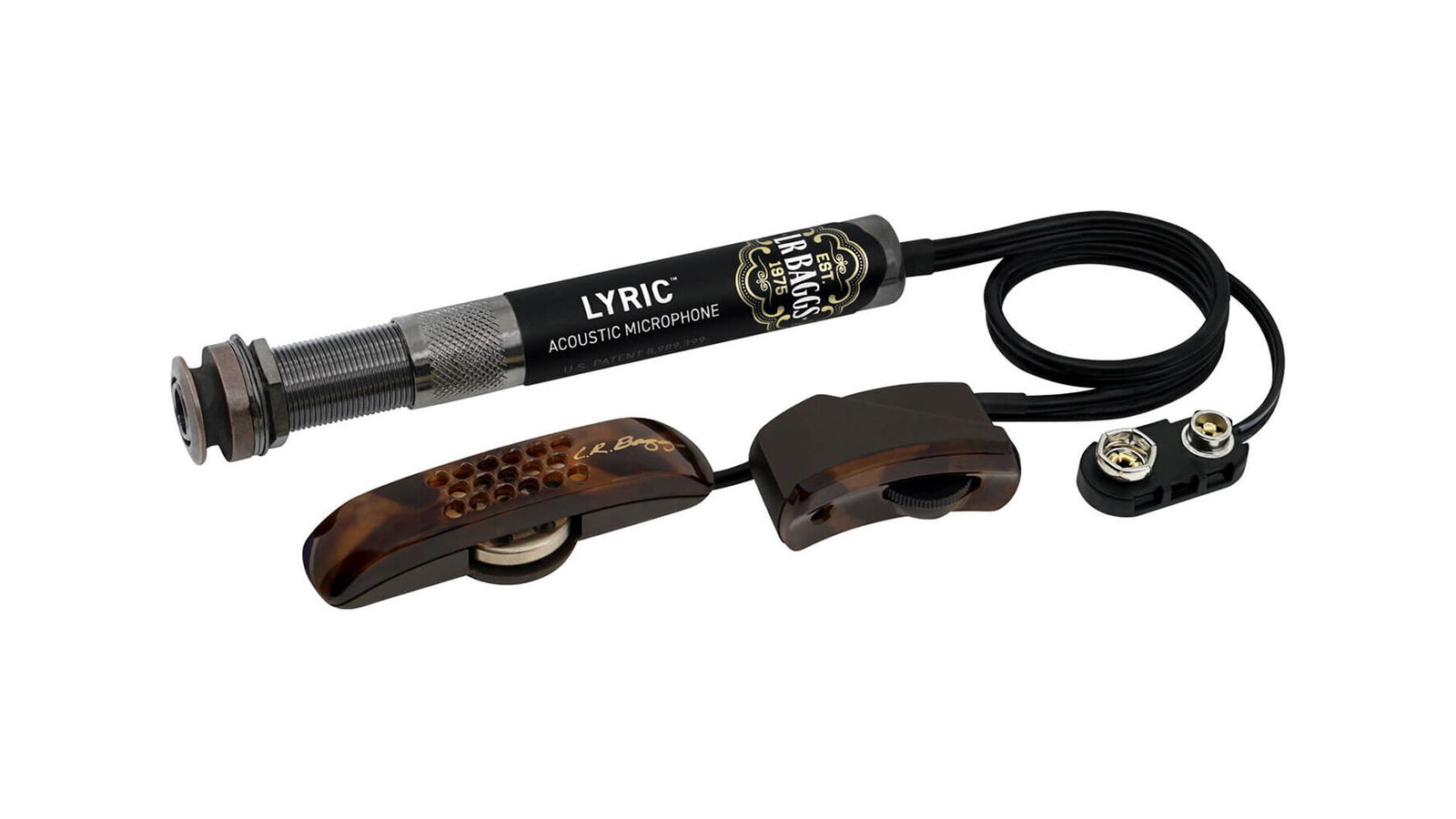
Specifications
Reasons to buy
Reasons to avoid
If you primarily play live, you've probably considered installing some kind of pickup or microphone in your acoustic. It may even have a factory-fitted piezoelectric system that you find a bit too harsh and bright.
Beyond the fact that your live audiences will be able to hear your playing, the added advantage of installing a microphone system in your guitar is that it makes recording easier than falling off an icy log covered in banana skins.
The LR Baggs Lyric is a neat, inexpensive solution that comprises a pressure zone microphone, a preamp and a small control unit for adjusting presence and volume. Provided you're courageous enough to get past step one – 'Drill a clean half inch hole in the tail-block for the strapjack' – the installation is surprisingly easy. Both the mic and the control unit are fixed to the inside of your guitar with sticky pads, leaving you with an invisible install. Only the presence and volume controls peep out slightly from beneath the top of the soundhole.
The presence control is, in theory, a one-time only fix. Once adjusted to sound most natural, with the supplied plastic pen-like tool, it should be good forever, but if you have second thoughts there's nothing to stop you re-adjusting it from time to time. The only other control is the knurled volume knob.
The microphone is placed just under the bridge, essentially using the soundboard as a diaphragm. The clever thing about a pressure zone microphone (which is a kind of condenser) is that it eliminates reflected sound waves, making it perfect for placing in a wooden box full of reflections. We were worried the sound would be lifeless, indistinct and boxy but we were pleasantly surprised to find it highly detailed, crisp, full and feedback free.
Because there's a decent preamp onboard, recording is simply a matter of plugging your acoustic directly into an interface. Does it sound as good as a guitar skilfully miked with a couple of Neumann KM184s? Of course not, but not all of us have the time, budget or patience to faff about placing boutique mics. If this sounds like you, the Lyric will prove to be a worthy, versatile solution that won't melt your credit card.
Read our full LR Baggs Lyric review
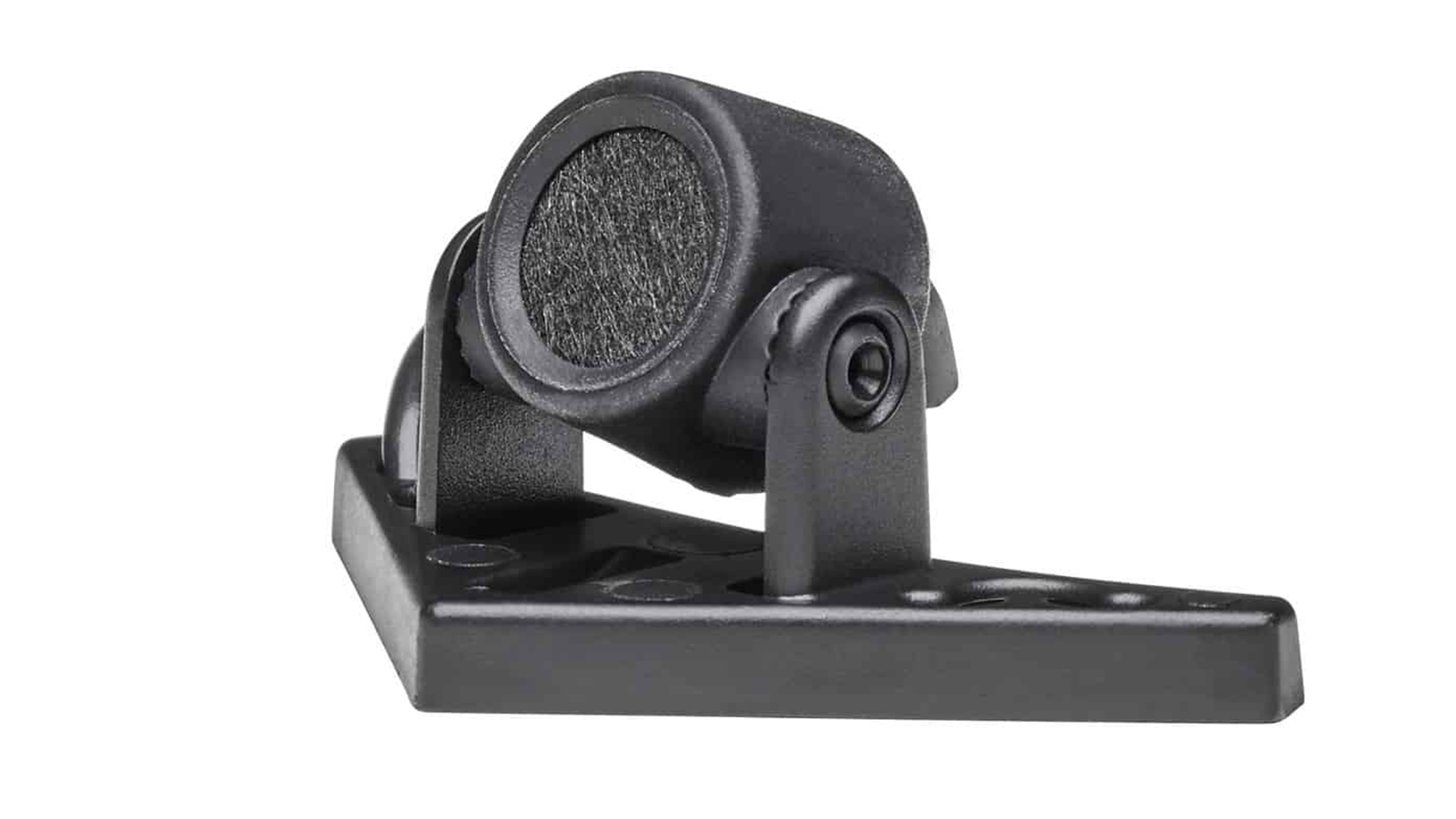
10. Fishman Matrix Infinity Mic Blend Acoustic Pickup
Our expert review:
Specifications
Reasons to buy
Reasons to avoid
Piezo undersaddle pickups have a lot going for them. They're unobtrusive, feedback resistant, very responsive and provide good articulation and clarity, which is especially important for fingerpickers. Unfortunately, they also tend to sound bright, artificial, generic and even a little harsh. Essentially, this is because a piezo only picks up the sound of the strings and not the air moving in and around the soundbox.
Piezos may not provide anything like a true representation of how a particular guitar sounds but many guitarists are reluctant to give them up because their advantages – feedback resistance in particular – outweigh their sonic shortfalls.
One alternative is to fit a condenser mic within the soundbox, a solution that can work well at low volumes but your guitar will howl like a banshee with a stubbed toe once you start to turn the dial up with any purpose. The obvious solution is to fit both. A piezo undersaddle pickup for clarity and feedback resistance together with a condenser for warm natural guitar tones.
The Matrix Infinity Mic Blend Acoustic Pickup system achieves just this, and does it rather well. It pairs its Acoustic Matrix piezo undersaddle pickup with a cardioid condenser microphone capsule that’s mounted on the underside of the soundboard near the soundhole.
The primary strength of this system is the sheer amount of control you have in shaping your final sound. There's a pre-amp voicing switch that, flicked one way, will give soloists and singers who accompany themselves a bass boost. Flick it the opposite way for a flatter response that will better cut through a busy mix.
Tone, blend and volume controls are all accessible from the soundhole. Twist the Tone control all the way to the right to scoop the piezo's midrange, for an open, airy yet punchy tone or back it off for just a bit of midrange cut. The Blend control works exactly as expected, with the central position giving a 50/50 mix of both pickup and mic signals. Dial in more clarity from the piezo or bring in more warmth from the mic. Or, if you prefer the sound of the mic dial in as much as you can before your guitar starts to feedback.
The mic can also be positioned (semi-permanently) towards the neck end of the soundhole for a warmer tone, or further around hole for more brightness. In addition, it's mounted on a swivel mount that makes it possible to angle it towards the back of the guitar for a cleaner sound or towards the soundhole for more bass response.
Installation isn't quite on a par with brain surgery but if you're not that handy with a drill you may want to trust it to your favourite guitar store or luthier. The kit does add a fair bit of wiring and a little bit of weight, about 120g, to your guitar but it will breathe new life into your live performances and recordings.
Best acoustic guitar mics: Buying advice
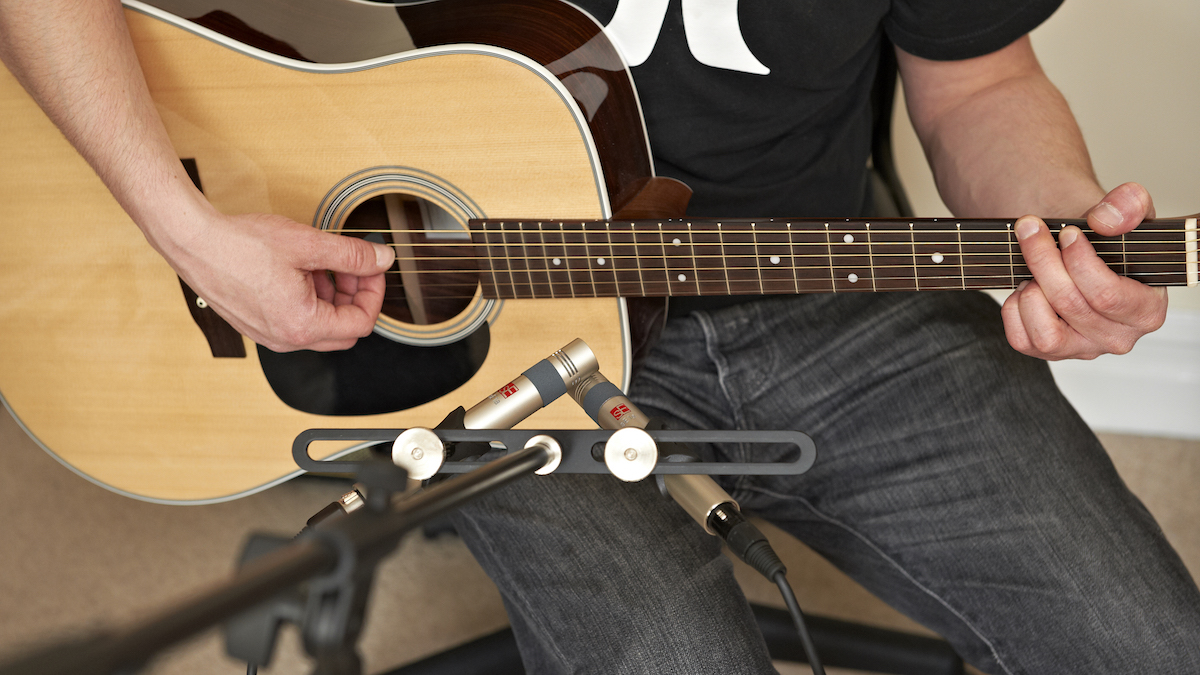
Choosing the best acoustic guitar mic for you
MusicRadar's got your back
The first step to getting a great acoustic guitar recording is to grab yourself a great guitar. It doesn't have to be expensive, boast exotic tonewoods or have a fancy brand name picked out in mother-of-pearl on the headstock. But it does need to be in tune, have fresh-ish strings and good intonation. If your recorded tone is important to you, then do yourself a favour and treat your guitar to a decent basic setup.
The second step is to grab yourself a great guitarist. This could be you, provided you've practised enough – if you want people to listen to your recording without plugging their ears with their thumbs then aim to play your masterpiece to a good standard before you hit that big red record button.
Finally, even a hand-crafted, limited-edition, gold-plated Germanic condenser mic – the kind that comes with a small teak presentation box and a large price tag – won't do your recordings any justice if the room sounds awful. So, if you're not fortunate enough to have your own recording studio at least silence those HVAC fans and dampen any sound reflections with carefully placed duvets. A couple draped in a V-shape behind you should do the trick, but aim to cover any hard surfaces with soft furnishings.
Condenser vs Ribbon vs Dynamic mics
The acoustic guitar is no piano but it still has a wide frequency range that's audible from about 100Hz (that warm bass) to 10KHz (those shimmering highs). As luck would have it, condenser mics feature very fine diaphragms that give them a frequency response that's broad enough to capture all of an acoustic's range and then some.
Large diaphragm condensers are go-to mics for vocals because they boast impressive low self-noise, a high frequency presence boost and, at the low end, a lush open sound. But they're often left collecting dust on the studio shelf when it comes to recording acoustic guitar.
That presence boost, which works so well for vocals, can make some guitars sound a little harsh, although the warm, bottom end will undoubtedly sound as smooth as freshly melted butter. Their most significant drawback though is lack of pointability. Most large diaphragm condensers are side address, which means that when close-miking an acoustic guitar some of the sound source will be off-axis. At best this leads to unpredictable results and, at worst, chunks of your acoustic's glorious sonic footprint risk being rejected entirely.
Which is where small diaphragm condenser mics prove their mettle. Compact and end-address, they're dead easy to aim directly at the sound source. Their relatively flat frequency response accurately captures the authentic sound of the instrument too, with little colouration. Generally, they lack the warmth of large diaphragm condensers, but if you have the budget you can overcome this by pairing both for the ultimate dual mic setup. Try close miking with a small diaphragm condenser, while placing a large diaphragm mic further away. Recording each mic on its own separate channel will enable you to warm up the piece with the feed from the large diaphragm condenser in the final mix, giving you the best of both worlds.
Dynamic mics have a reputation for being tough, cheap, insensitive brutes suitable for live work and little else. It's true that they live for the kind of ear-piercing volumes that would permanently damage their delicate condenser cousins but they're also useful for guitarists whose playing style relies more on instinct than talent. So, if you're a strident strummer then the limited frequency response of a good dynamic mic will reject a lot of unwanted handling noise – both treble and bass – while seemingly boosting the percussive mid-range. You'll sound great, in a less is more kinda way.
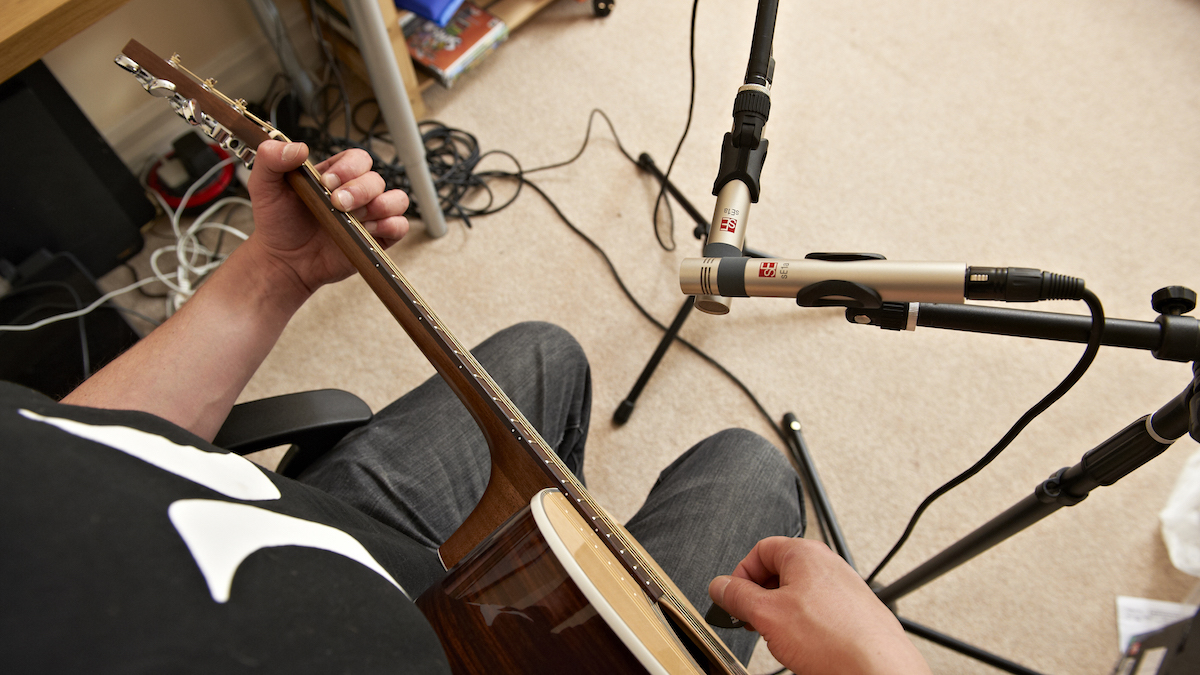
Once commonplace, ribbon mics are now less popular than condensers and dynamics, which dominate both studio and stage. Nevertheless, ribbon mics are highly regarded for capturing extremely natural-sounding recordings, with plenty of buttery warmth and top-end sparkle.
They're closely related to condenser mics, which is why they excel at detailed, nuanced recordings. But, unlike condensers, they won't colour your sound or pick up unwanted room noise or other off-axis sounds. Setup a ribbon correctly and you'll get a very authentic, true-to-life recording of your instrument.
If you're a forever-touring singer-songwriter type who spends way more time on stage than in the studio, you may be wondering if you can get away with using an onboard mic/pickup system.
Absolutely. Solutions, such as those from Fishman and LR Baggs, will enable you to plug your acoustic directly into an audio interface for surprisingly good tones. Typically, they use a combination of internal piezo and condenser mics, sometimes with a soundhole pickup too.
Essential acoustic guitar recording techniques
An acoustic dreadnought is about a metre long and almost half a metre wide, with many other guitar sizes not really that much smaller. Where exactly should you place a mic – pointing one at the sound hole seems the obvious place to start? Well, not really…
Miking with a single mic. If you only have a single mic, recording in mono is nothing to be ashamed of. Setup is quick and easy and you can get some fantastic results. Just avoid placing the mic directly in front of the soundhole because this is where there's a lot of resonance build-up, which makes recordings sound boomy.
Instead, start by aiming the mic roughly where the body meets the neck, which is usually somewhere between the 12th and 14th frets. If this placement still sounds boomy then move the mic up the neck a little and try again. If it sounds thin and lacking depth then move it towards the body. Simples.
Alternatively, you could experiment with aiming at the soundhole but with your mic placed below or above it to avoid the boom from all that air moving directly into the mic.
Whichever method you use, initially try positioning the mic about six inches away from the body of the guitar before moving it closer or further away. As the mic moves closer, you'll hear a more pronounced proximity effect, which may give you the extra warmth you're searching for or it could just sound muddy. Moving the mic back will give you a more natural, airy sound with less fret noise and finger squeal. Again, experiment until you arrive at the sound you're happy with.
Miking with two mics. Going stereo will give you extra fullness and depth, but may take a little more time to get right. There are dozens of possible configurations but the essential ones to try are a spaced pair (A/B) and coincidental pair (X/Y).
To set up a spaced pair simply position one mic at the 12th to 14th fret area and another at the bridge. If you have one, a large diaphragm condenser works well at the bridge. It's best to start by fine-tuning each mic's position individually before monitoring the stereo mix and making any final adjustments. Otherwise you risk getting into a confused, sonic pickle. Watch out for phasing issues too, which can usually be overcome by making sure that the distance between each mic is at least three times the distance to the guitar.
A coincidental pair (X/Y) is a couple of mics positioned with their diaphragms very close (usually stacked) but aimed 90 degrees away from one another so that one is pointing diagonally left and the other diagonally right in a V shape. Start by positioning both mics around the 12th to 14th fret area, so that one is capturing definition from the neck and the other is picking up warmth from the body of the guitar. Move and adjust until you find a good balanced sound. An advantage of the X/Y configuration is that it minimises phase cancellation issues.
Find out more about how we test music gear and services at MusicRadar.
Related buyer's guides
- Best acoustic guitar pickups for strummers to percussive players
- Hold your microphone steadfast with the best mic stands
- The best acoustic guitar amps for buskers and gigging guitarists
- Prep for a session with the best acoustic guitar strings
- Cut the cord with the best wireless microphones
- The best acoustic guitar amps for buskers and gigging guitarists
- Make yourself heard with the best XLR microphones
- Work the crowd with the best live vocal microphones
Want all the hottest music and gear news, reviews, deals, features and more, direct to your inbox? Sign up here.
When Simon's childhood classical guitar teacher boasted he 'enjoyed a challenge', the poor man had no idea how much he'd underestimated the scale of the task ahead. Despite Simon's lack of talent, the experience did spark a lifelong passion for music. His classical guitar was discarded for an electric, then a room full of electrics before Simon discovered the joys of keys. Against all odds, Simon somehow managed to blag a career as a fashion journalist, but he's now more suitably employed writing for MusicRadar and Guitar World. When not writing or playing, he can be found terrifying himself on his mountain bike.
